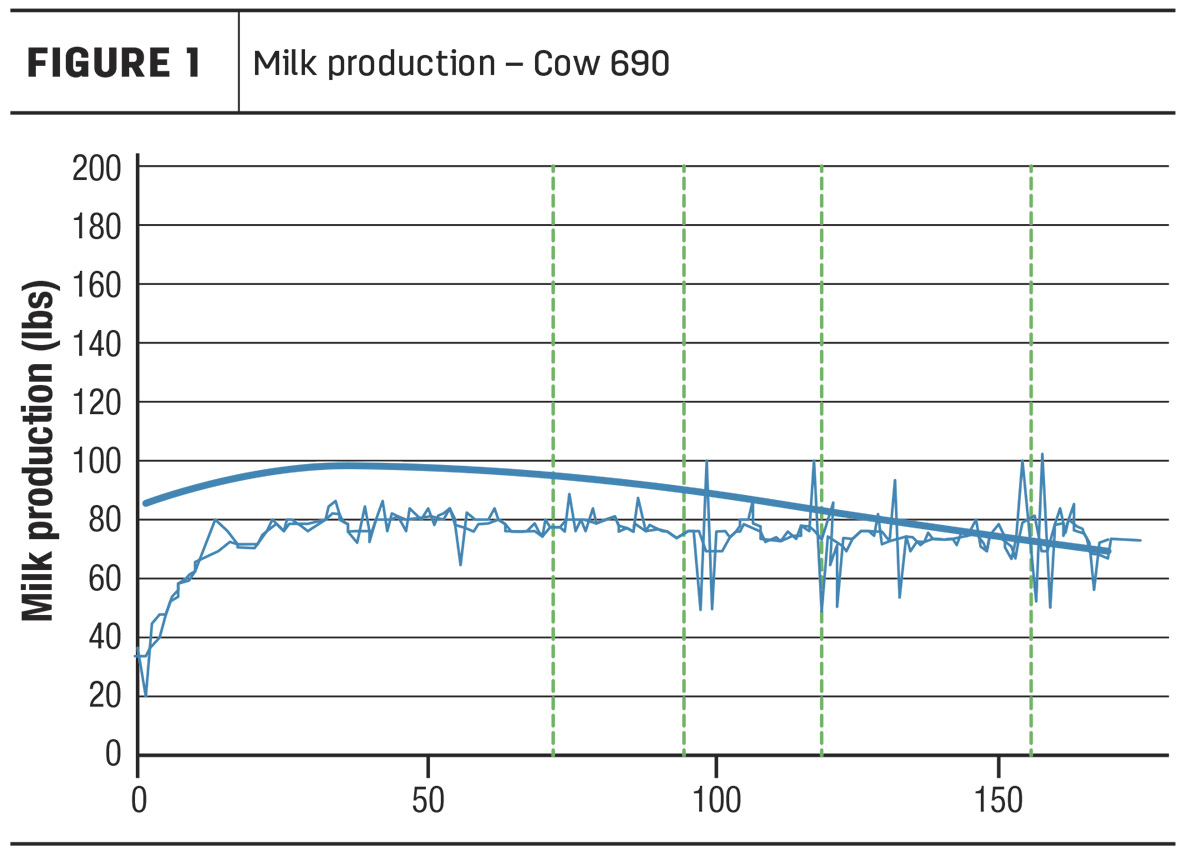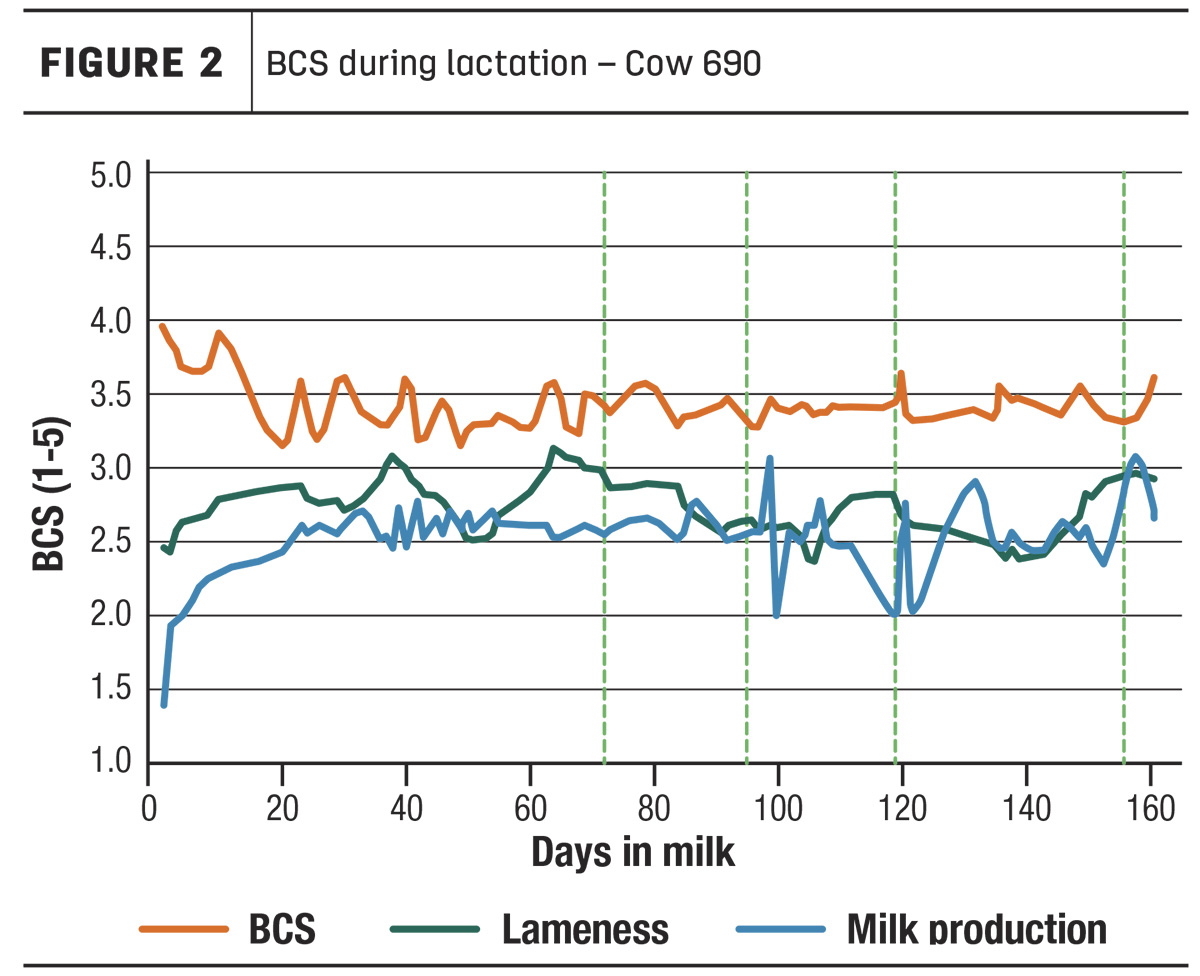The voluntary waiting period (VWP) is a designated interval between calving and the first postpartum insemination, typically lasting between 50 to 80 days depending on the farm's management strategy. The primary purpose of the VWP is to allow the cow adequate time to recover from the stress of calving, restore her energy balance and return to normal reproductive function.
Extending the VWP can increase the likelihood of successful conception on the first insemination, reducing the number of inseminations required and the amount of semen used, leading to cost savings. However, the effectiveness of an extended VWP remains debated, making it essential to assess its efficacy in delivering benefits and identifying any unforeseen challenges.
Fertility metrics
Key fertility metrics such as estrus intensity, first-service conception rate, number of inseminations per conception and insemination period length serve as vital indicators in assessing a cow's reproductive performance.
Estrus intensity refers to the strength and visibility of the signs of estrus (heat) exhibited by cows. This is an important factor in fertility management, as stronger and more obvious signs of estrus make it easier for farmers to accurately detect when a cow is in heat, thereby timing insemination more effectively to enhance the chances of successful conception. Signs of estrus can include behaviors such as mounting other cows, increased activity, vocalization and mucus discharge.
Previous university studies, however, have yielded mixed results regarding the effects of extended VWP on fertility outcomes. The data has often been confounded by variations in study methodologies and cow demographics. Moreover, the impact of extended VWP on health indicators and culling rates remains inconclusive, further complicating the assessment of its overall efficacy.
Current research
A recent study published in the Journal of Dairy Science conducted at the Department of Animal Nutrition and Management of the Swedish University of Agricultural Sciences examined estrus intensity, first-service conception rate, number of inseminations per conception, and insemination period length during the first lactation with an extended VWP and the subsequent lactation without VWP modification. A total of 531 participating cows were divided into extended and conventional VWP treatments, with compliance rates serving as a crucial parameter for evaluation.
Extended VWP demonstrated promising results during the first lactation, with improved fertility metrics such as estrus intensity and first-service conception rate. However, the benefits seemed to diminish in the subsequent lactation, raising questions about the long-term efficacy of this approach. Compliance with planned VWP treatments varied across herds, with challenges ranging from adapting to the new management routine to unforeseen deviations in insemination practices. Despite these challenges, the statistical analysis revealed no difference in culling rates between cows with extended or conventional VWP treatments.
Reduced dry periods
The dry period serves multiple functions, such as treating cows for mastitis and allowing rest before calving. However, it also often leads to a negative energy balance in early lactation, increasing disease risks and reducing fertility. Shortening or omitting the dry period helps manage the negative energy balance by lowering peak milk yield and shifting production before calving, a strategy that reduces disease incidence and improves fertility. Following are some considerations as they pertain to the VWP in herds that shorten the dry period:
- Energy balance and recovery: Without a dry period, cows do not get a break to recover and restore their energy reserves. This could exacerbate negative energy balance issues, potentially negating the benefits of an extended VWP aimed at energy balance restoration.
- Production: Continuous lactation might affect milk production dynamics, possibly leading to a decline in overall productivity over time due to the lack of recovery periods.
- Fertility metrics: The absence of a dry period may influence fertility metrics such as first-service conception rate and number of inseminations per conception. Continuous lactation could stress cows, making it harder for them to exhibit strong estrus intensity and reduce conception rates.
- Health considerations: Continuous lactation can increase the risk of health issues such as mastitis and metabolic disorders, which could further complicate the assessment of extended VWP benefits.
- Culling rates: The strain of continuous lactation might lead to higher culling rates due to health and productivity declines, potentially skewing the comparison between extended and conventional VWP treatments.
Practical example
Cow 690 is a 2-year-old primiparous cow that weighs 1,364 pounds and is 160 days in milk. She exhibited some challenges during her first lactation, peaking 20 pounds below expectations as depicted in her milk production graph (Figure 1). Despite showing her first heat at 72 days in milk a few days after the VWP, she required four inseminations before finally becoming pregnant.

In Figure 2 we observe the evolution of her body condition score (BCS) and her lameness score as measured with late-generation 3D imaging technology. Her BCS remained relatively stable, dropping from 4.0 at calving to 3.15 three weeks later, but then recovering to approximately 3.4 and sustaining thereafter. She did experience locomotion problems, as evidenced by her dropping nearly 1.25 points in locomotion score. This likely explains the erratic nature of her daily milk production. This case highlights the complexities of managing primiparous cows and the importance of addressing issues such as fertility and locomotion early on to ensure optimal performance and well-being.

Implications
Cow 690's difficulty in becoming pregnant after repeated inseminations can be attributed to several factors. Her BCS dropped significantly from 4.0 to 3.15 post-calving, indicating notable energy mobilization that could affect reproductive hormones and ovulation quality. Additionally, her lameness, shown by a drop of nearly 1.25 points in her locomotion score, likely caused stress and pain, negatively impacting fertility. Lame cows often exhibit altered estrus behaviors, complicating heat detection and insemination timing. Metabolic stress in the postpartum period, even with a seemingly stable BCS, might also impair her reproductive cycle. Furthermore, repeated inseminations without successful pregnancy could indicate subclinical uterine infections or other reproductive tract issues affecting fertility.
Given these challenges, a short dry period may not be ideal for Cow 690. It could provide insufficient time for her to rest and recover from lactation stress, potentially reducing milk yield in the next lactation and exacerbating fertility issues due to insufficient recovery time. In contrast, an extended VWP could be beneficial. This would allow more time for her to restore energy reserves, achieve hormonal balance and improve reproductive health. It could enhance her fertility by increasing the likelihood of successful conception on the first insemination, reducing stress and costs associated with multiple inseminations. Additionally, a longer VWP could provide more time to address subclinical health issues, improving her overall health and subsequent lactation performance.
Further research needed
The extended VWP shows potential for improving fertility metrics during the first lactation, especially in primiparous cows. However, its long-term benefits and overall impact on herd health and productivity need further investigation, particularly in the context of herds implementing no dry periods. Careful management and adherence to planned VWP protocols are crucial for realizing the potential benefits of this strategy. Future studies should consider the interaction between extended VWP and no dry period practices to provide a more comprehensive understanding of optimal dairy cow management.
References omitted but available upon request by sending an email to an editor.






